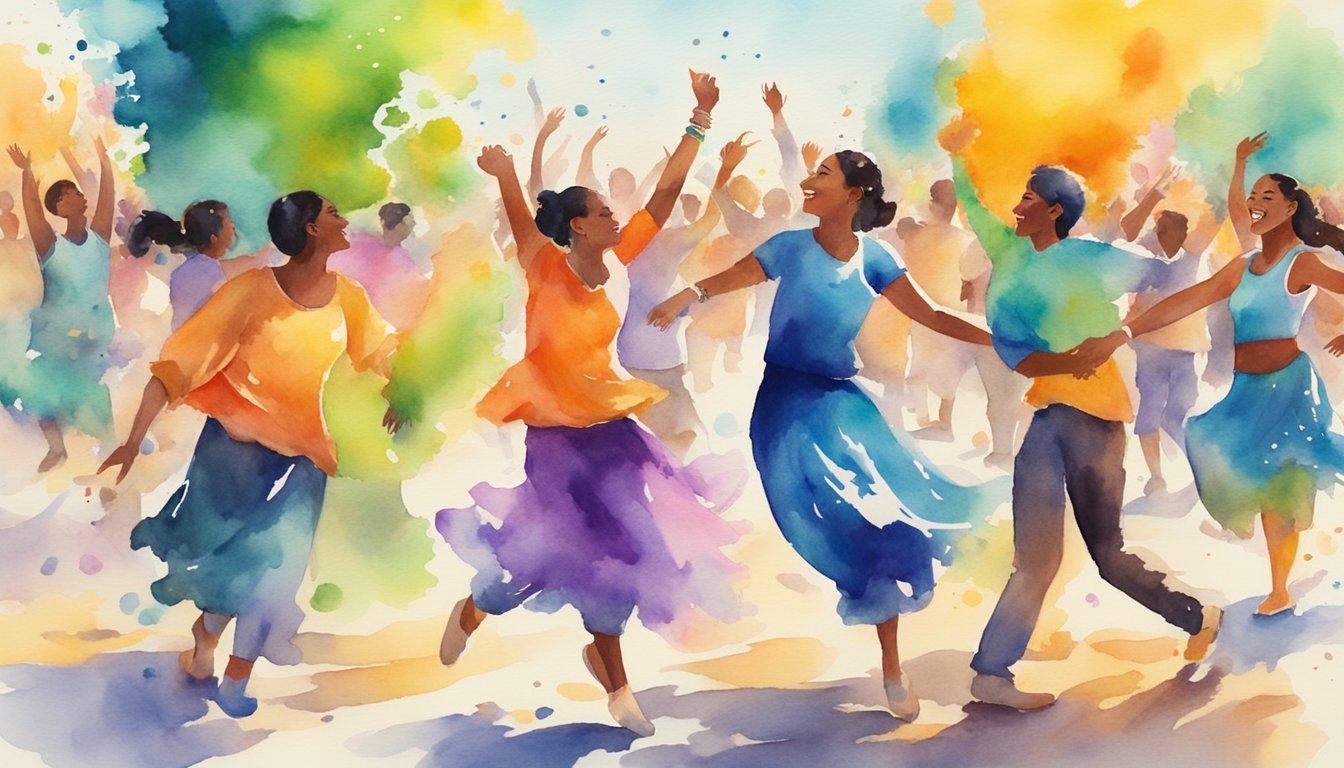Festival of Colors: Origins and Significance
The Festival of Colors is deeply rooted in Hindu mythology and holds significant religious importance across regions of South Asia. It’s a vibrant canvas symbolizing the heralding of spring and the victory of good over evil.
Historical Roots and Mythology
The origins of the Holi Festival are said to date back to ancient times and are heavily steeped in Hindu mythology. One prominent legend involves the Hindu god Vishnu and his follower Prahlada. The young Prahlada, a devoted follower of Vishnu, faced persecution from his father, the demon king Hiranyakashipu, who was insistent upon his own divinity. The king’s sister, Holika, tricked Prahlada into sitting on a pyre with her, believing her boon to resist fire would protect her. However, it was Prahlada who emerged unscathed, signaling the triumph of good over evil.
Another narrative integral to Holi’s heritage revolves around the deity Krishna, an incarnation of Lord Vishnu, and his love for Radha. The playful aspect of Holi is often associated with Krishna‘s frolics with Radha and the gopis (female cowherds). This aspect of the celebration emphasizes joy and the spirit of inclusiveness.
Cultural and Religious Significance
Holi is recognized as a Hindu festival of colors celebrated predominantly in India and other parts of South Asia. Observed on the full moon day in the month of Phalguna (February-March), Holi commemorates not just the well-known legends but also the eternal cycle of seasons. For many, it represents new beginnings; for instance, green, a color used during Holi, stands for fresh starts and nature’s revival.
Additionally, the religious aspect of Holi, known as Holika Dahan, involves ritual bonfires representing the burning of Holika and the protection of Prahlada, reinforcing themes of the victory of good over evil. The social aspect allows for the dissolution of social norms, where individuals of all statuses mingle, and norms around modesty and expected behavior are loosened, showcasing the festival’s power to bridge social divides.
Celebratory Practices and Expressions

The festival of Holi is renowned for its vibrant display of colors and joyous activities that signify triumph and harmony. This section will explore the myriad customs and social practices that come to life during this festive time.
Rituals and Traditions
During Holi, the use of colored powder is a hallmark tradition representing the vitality of spring and the positivity of life. The festivities commence with a bonfire on the eve of Holi, symbolizing the burning away of evil spirits and the triumph of good. This pyre is often fed with twigs, and wood highlights the importance of nature in this festival. At temples, devotees engage in singing and dancing, expressing their devotion to deities such as Radha and Krishna, whose legendary love is a focal point of Holi celebrations. Special foods like gujiya, a sweet dumpling, lassi, a creamy yogurt drink, and thandai, a spiced milk beverage, are prepared to mark the occasion.
Colorful Expressions and Social Aspects
Holi breaks down societal barriers as people of all ages, castes, and genders engage in playful exchanges of colored powders and water. Streets become awash with groups wielding powders and water balloons, covering each other in hues of pink, purple, red, blue, yellow, and green. This jubilant play is accompanied by pulsating music and rhythmic dancing, often stretching well into the day. The colored pigments, once made from flowers and herbs such as turmeric, echo the connection to nature and fertility. In recent years, the festival has spread across the diaspora, with celebrations in the United States and other countries, showcasing the global appeal of Holi as a joyful and unifying event.

